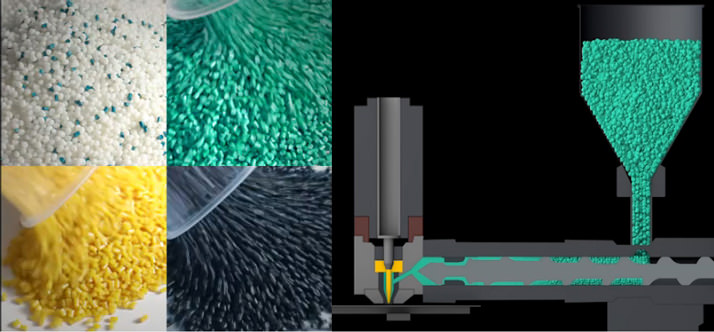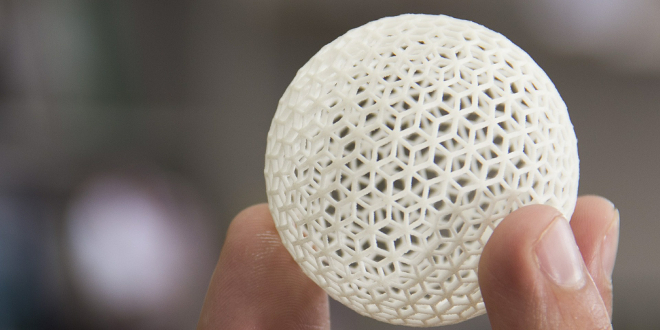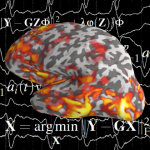Additive manufacturing, a process for the industry of the future
As a major component of the Industry of the Future project, additive manufacturing — or 3D printing — is leading to ever-increasing research on materials. Researchers at Mines Douai seized on the opportunity to explore this line of research a little over two years ago. Today, the many requests the school has received for research partnerships show the importance of issues surrounding additive manufacturing.
“Additive manufacturing probably constitutes the most promising market in the materials sector,” assures Jérémie Soulestin, a researcher at Mines Douai. According to this polymers specialist, it is a “mature” field, but is “still rarely addressed by plastics manufacturers.” The Polymer and Composite Technology & Mechanical Engineering Department (TPCIM), where Jérémie Soulestin works, has seized the opportunity offered by this field. For two years, additive manufacturing has been the focus of the research carried out by the department’s teams. Of course, 3D printing processes for materials are no longer new. “Other colleagues have been addressing the issue by using laser sintering for some years now,” admits Jérémie Soulestin. But the innovation lies in the new combinations of materials and processes.
Laser sintering uses dry powders that are melted by a laser in specific places. The drops that form remain malleable for a few moments before cooling down, making it possible to create the desired shapes. Additive manufacturing via laser sintering was one of the first 3D printing processes to emerge, and today it produces good results for metals and certain plastics, specifically polyamides. However, it cannot be used for all available materials. Therefore, scientists have chosen to seek other processes, in order to expand the range of possibilities.
A wide range of stakeholderss
Jérémie Soulestin explains that the TPCIM department is “ahead of the game, particularly in terms of machines.” In support of this claim, he mentions the recent acquisition of the Arburg freeformer. Theoretically, this 3D printer is capable of using a large range of plastic materials used in plastics processes. “This tool uses an approach that is at odds with other manufacturers offering machines adapted to a limited range of associated materials,” the researcher explains. This approach is also better adapted to the work of Mines Douai scientists, which has traditionally focused on injection processes. Unlike laser sintering, this new additive manufacturing technique is within the researchers’ field of expertise. It is also a very popular field of expertise as reflected by the many industrial collaboration projects, which have continued to increase in line with the new work on additive manufacturing.
“We work with partners with a wide range of profiles,” explains Jérémie Soulestin. And for good reason, since the new processes interest industrial stakeholders at different levels of maturity, who all recognize the increasingly important role additive manufacturing will play in the industry of the future. “Some companies come to us for business development purposes: they know this is important, without truly understanding the issues,” admits the scientist. However, he adds, “Others, like major companies, come to us with very specific subjects.” All sectors are concerned, such as aeronautics for the small-series production of part.

The Arburg freeformer offers, in theory, a much wider range of materials than other 3D printers. Credits: Arburg.
Additive manufacturing: added value
The reluctance expressed in the past — particularly regarding durability — is no longer valid today. Companies see additive manufacturing as representing “real added value” in comparison with other traditional processes (such as machining). “We no longer have the technological barriers we had a few years ago,” confirms Jérémie Soulestin. The technology, with its layer-by-layer concept, does have its limitations, “but the choice of materials and certain optimization concepts have made it possible to overcome these limitations,” the researcher stresses.
Today, the prospects for improving the processes lie essentially in expanding the range of useable materials. In plastics processes, the key issue is to be able to use a larger range than for polyamides, which form a large percentage of the available polymers. Another opportunity for research is in semi-crystalline polymers, which present more challenges in terms of mastering the solidification. The target seems clear: in the future, it should be possible to manufacture every part using an additive manufacturing process.
[box type=”shadow” align=”aligncenter” class=”” width=”95%”]
Conference on Polymer materials for additive manufacturing
What are the prospects for additive manufacturing technology in the field of polymer materials? This is the question researchers and industrial stakeholders will be trying to answer at the conference on “Polymer materials for additive manufacturing – reality and prospects.” The conference, organized by the French Society of Plastics Engineers (SFIP), Mines Douai, and the French Society of Automotive Engineers (SIA), will take place on March 23 and 24 in Villeurbanne on the INSA Lyon campus, which is also a partner of this event.
[/box]





Leave a Reply
Want to join the discussion?Feel free to contribute!